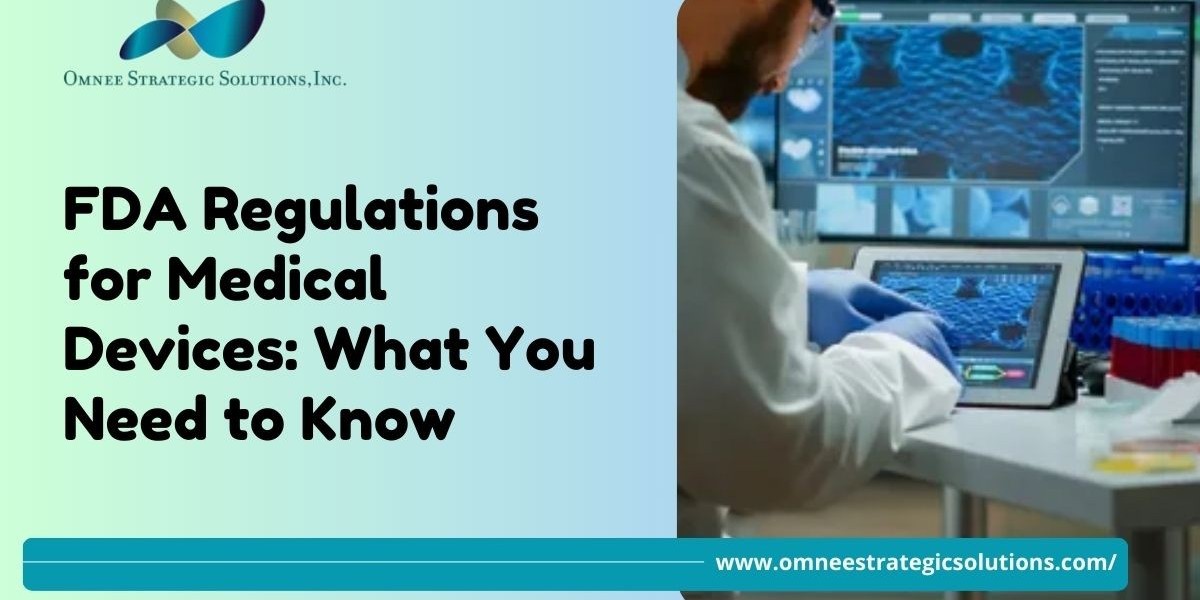v
In the healthcare industry, ensuring the safety and effectiveness of medical devices is paramount. The U.S. Food and Drug Administration (FDA) plays a crucial role in this regard by establishing and enforcing regulations that manufacturers must follow to market medical devices in the United States. Understanding these FDA Regulations for Medical Devices is essential for manufacturers, healthcare providers, and patients alike. This blog provides a comprehensive overview of the key aspects of FDA regulations governing medical devices.
What Are Medical Devices?
Medical devices are instruments, apparatuses, machines, implants, or other similar or related articles used to diagnose, prevent, mitigate, treat, or cure diseases or other conditions. Examples include simple tools like tongue depressors to complex equipment like pacemakers. The FDA classifies medical devices into three categories based on the risk they pose to patients:
- Class I: Low-risk devices such as bandages and handheld surgical instruments.
- Class II: Moderate-risk devices like infusion pumps and blood pressure monitors.
- Class III: High-risk devices, including heart valves and implantable pacemakers.
Each class has specific regulatory requirements to ensure device safety and effectiveness.
FDA’s Role in Regulating Medical Devices
The FDA is responsible for protecting public health by ensuring that medical devices are safe and effective. This involves a rigorous process that includes:
Premarket Notification (510(k)): For Class I and Class II devices, manufacturers must submit a 510(k) notification to demonstrate that the device is substantially equivalent to an already legally marketed device. This process typically involves providing data on the device’s safety and effectiveness.
Premarket Approval (PMA): Class III devices require a more stringent review process known as Premarket Approval. This process involves extensive testing, clinical trials, and a thorough review of the data to ensure the device's safety and effectiveness.
Investigational Device Exemption (IDE): For devices undergoing clinical trials, manufacturers must obtain an IDE to conduct the trials legally. The FDA reviews the proposed study to ensure that the trial design is appropriate and that patient safety is prioritized.
Post-Market Surveillance: Even after a device is approved, the FDA continues to monitor its performance through post-market surveillance. This includes reporting adverse events, conducting inspections, and requiring periodic updates from manufacturers.
Key FDA Regulatory Requirements
Labeling Requirements: Medical device labeling must include accurate and comprehensive information about the device, including instructions for use, warnings, and contraindications. The FDA reviews labeling to ensure it provides sufficient information for safe and effective use.
Quality System Regulation (QSR): Manufacturers must establish and maintain a quality management system (QMS) that complies with FDA’s Quality System Regulation. The QMS must ensure that devices are consistently designed, manufactured, and distributed according to regulatory standards.
Unique Device Identification (UDI): The FDA requires most medical devices to have a Unique Device Identifier (UDI) to improve traceability and enhance patient safety. The UDI system allows for better tracking of devices throughout their lifecycle.
Reporting and Record-Keeping: Manufacturers must report any adverse events or device malfunctions to the FDA and maintain detailed records of these incidents. This requirement ensures that any issues with the device are promptly addressed.
Challenges in FDA Compliance
Navigating the FDA’s regulatory framework can be challenging for manufacturers, especially for those new to the market. Common challenges include:
Understanding Regulatory Requirements: The complexity of FDA regulations can make it difficult for manufacturers to understand what is required for compliance.
Meeting Documentation Standards: The FDA requires extensive documentation for all aspects of device development, manufacturing, and post-market monitoring. Ensuring that all documents meet FDA standards can be a significant burden.
Keeping Up with Regulatory Changes: The FDA regularly updates its regulations and guidance documents. Manufacturers must stay informed about these changes to ensure ongoing compliance.
Conclusion
Understanding and complying with FDA Regulations for Medical Devices is crucial for ensuring that medical devices are safe and effective for patients. While the regulatory process can be complex, it is essential for protecting public health. Manufacturers must carefully follow FDA guidelines from the initial design phase through to post-market surveillance to ensure their devices meet all regulatory requirements.
This blog aims to provide a clear and concise overview of FDA regulations, helping both new and established manufacturers navigate the regulatory landscape. By adhering to these regulations, manufacturers not only comply with the law but also contribute to the safety and well-being of patients who rely on their products.









